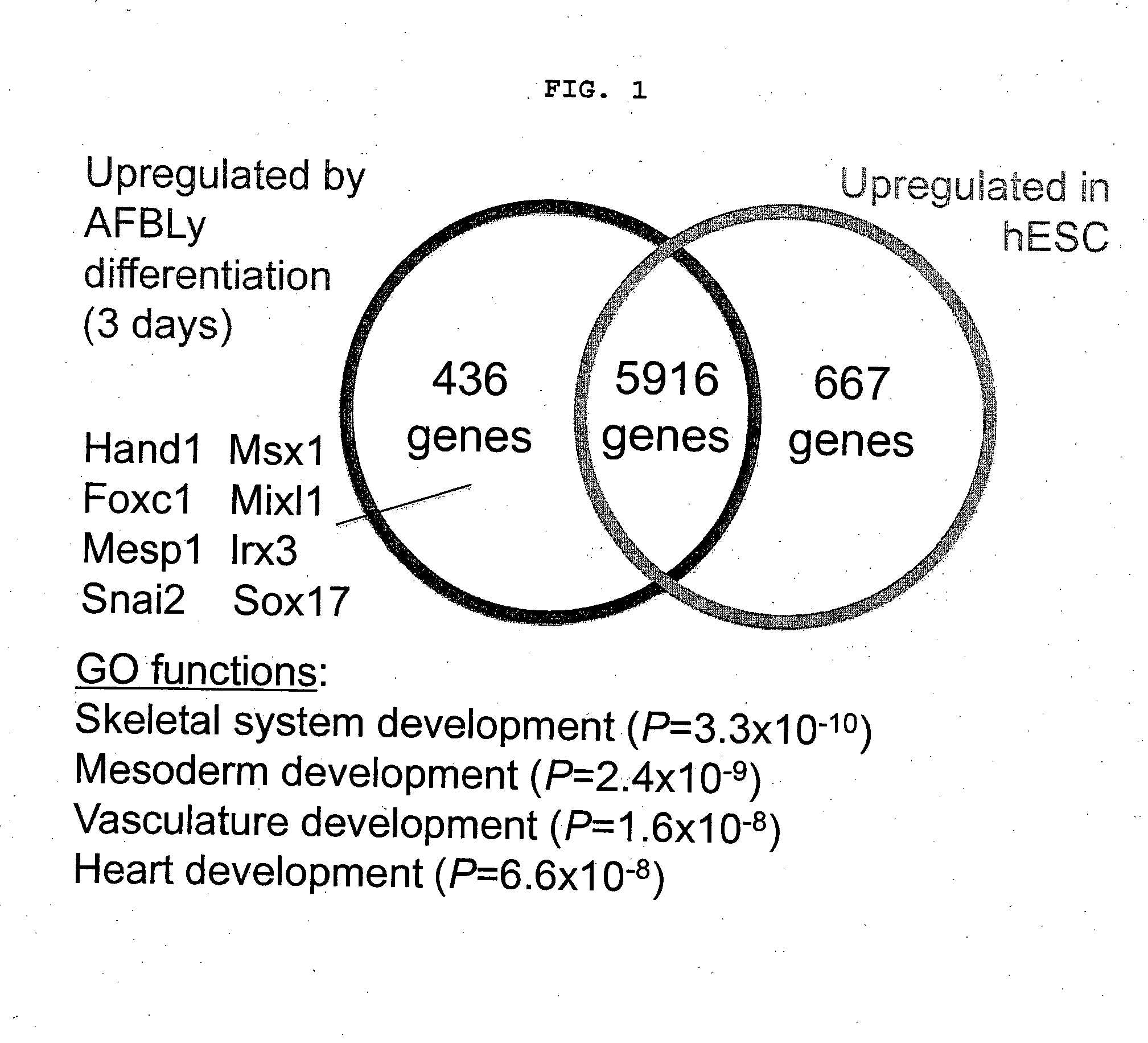Methods of differentiating stem cells into one or more cell lineages
- Summary
- Abstract
- Description
- Claims
- Application Information
AI Technical Summary
Benefits of technology
Problems solved by technology
Method used
Image
Examples
Embodiment Construction
Definitions
[0025]The following words and terms used herein shall have the meaning indicated:
[0026]As used herein, the term “stem cells” include but are not limited to undifferentiated cells defined by their ability at the single cell level to both self-renew and differentiate to produce progeny cells, including self-renewing progenitors, non-renewing progenitors, and terminally differentiated cells. For example, “stem cells” may include (1) totipotent stem cells; (2) pluripotent stem cells; (3) multipotent stem cells; (4) oligopotent stem cells; and (5) unipotent stem cells.
[0027]As used herein, the term “totipotency” refers to a cell with a developmental potential to make all of the cells in the adult body as well as the extra-embryonic tissues, including the placenta. The fertilized egg (zygote) is totipotent, as are the cells (blastomeres) of the morula (up to the 16-cell stage following fertilization).
[0028]As used herein, the term “pluripotent stem cell” refers to a cell with t...
PUM
 Login to View More
Login to View More Abstract
Description
Claims
Application Information
 Login to View More
Login to View More - R&D
- Intellectual Property
- Life Sciences
- Materials
- Tech Scout
- Unparalleled Data Quality
- Higher Quality Content
- 60% Fewer Hallucinations
Browse by: Latest US Patents, China's latest patents, Technical Efficacy Thesaurus, Application Domain, Technology Topic, Popular Technical Reports.
© 2025 PatSnap. All rights reserved.Legal|Privacy policy|Modern Slavery Act Transparency Statement|Sitemap|About US| Contact US: help@patsnap.com



